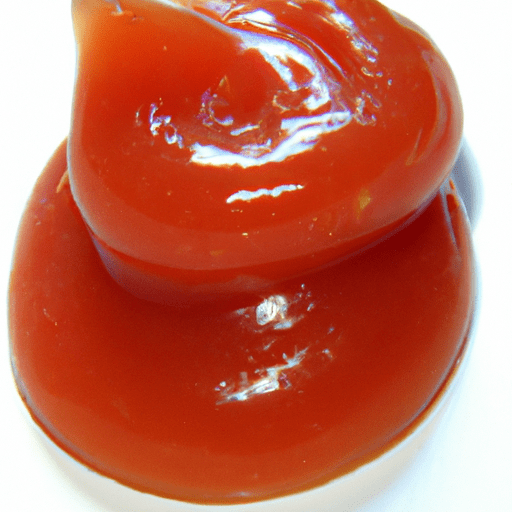All About Catsup: An Essential Condiment in the Kitchen
Catsup, also known as ketchup, is a versatile and beloved condiment found in kitchens around the world. Loved for its tangy and slightly sweet taste, catsup has a fascinating history and a multitude of uses in cooking. Join us as we explore everything you need to know about this iconic sauce.
The Taste of Catsup
Catsup offers a unique blend of flavors, combining tanginess, sweetness, and a subtle hint of umami. Its vibrant taste is derived from a combination of ingredients such as ripe tomatoes, vinegar, sugar, and a mix of spices like onion, garlic, cloves, and cinnamon.
The balance of these flavors creates a condiment that is simultaneously refreshing and rich, making it the perfect companion for a wide range of dishes.
Common Uses in Cooking
Catsup is incredibly versatile in the kitchen and can be used in various ways. Here are some popular uses for this flavorful sauce:
Dipping Sauce: Catsup is commonly used as a dipping sauce for fries, chicken tenders, and other fried snacks. Its tangy taste provides a delightful contrast to the crispy texture.
Condiment: Catsup is a staple condiment found on most dining tables. It adds a burst of flavor to burgers, hot dogs, sandwiches, and wraps. Its zesty nature complements the savory components of these foods.
Marinade Ingredient: With its slightly acidic properties, catsup works wonders as a component in marinades. It tenderizes meat while infusing it with a delightful sweet and tangy flavor. Use it to marinate chicken, pork, or even tofu before grilling or baking.
Flavor Enhancer: Add a few tablespoons of catsup to stews, soups, and casseroles to enhance the depth of flavors. It brings a subtle hint of sweetness while balancing out the richness of the dish.
Nutritional Value
While catsup is highly praised for its taste, it’s important to consider its nutritional content. Here’s a breakdown of the key components found in a typical serving of catsup (one tablespoon):
- Calories: Approximately 20 calories.
- Carbohydrates: Around 5 grams.
- Sugar: Most brands contain around 4 grams of sugar, making it important to consume catsup in moderation, especially for individuals monitoring their sugar intake.
- Vitamins and Minerals: Catsup contains small amounts of vitamins A and C. However, its nutritive value may vary depending on the brand and recipe.
A Brief History and Fun Facts
Catsup has a rich and intriguing history that spans centuries. Here are a few interesting tidbits:
Global Influence: Although commonly associated with American cuisine, catsup’s origins can be traced back to ancient China, where it was initially made from fermented fish sauces.
Tomato Revolution: The introduction of tomatoes to catsup recipes is credited to American settlers in the late 18th century. Prior to this, catsup was primarily made with ingredients such as mushrooms, walnuts, and anchovies.
Evolution of the Name: The term “ketchup” originated from the Hokkien Chinese word “ke-tchup,” which referred to a sauce made from fermented fish. As it made its way to the Western world, the spelling and pronunciation evolved to become “catsup” or “ketchup.”
Beyond Tomatoes: Today, catsup can be found in a variety of flavors and ingredients. From spicy jalapeno catsup to mushroom catsup, there are countless innovative variations to explore.
Catsup remains an integral part of culinary traditions worldwide. Its tangy, sweet, and versatile nature makes it an ideal companion for a multitude of dishes. Whether you’re using it as a condiment, marinade ingredient, or flavor enhancer, catsup adds a unique touch that elevates the overall culinary experience. Embrace the vibrant world of catsup and unlock its full potential in your kitchen today!
Origin of Catsup:
- Catsup, also known as ketchup, originates from ancient Chinese cultures and was derived from various fermented fish-based sauces.
- It was later introduced to Europe by Dutch traders in the early 17th century and was adapted to include ingredients such as mushrooms, anchovies, and walnuts.
Common Uses of Catsup:
- Catsup is commonly used as a condiment or sauce, complementing a wide range of dishes such as hamburgers, hot dogs, french fries, and sandwiches.
- It can also be used as an ingredient in sauces, dressings, and marinades to add flavor and tanginess to various recipes.
Nutritional Benefits of Catsup:
- Catsup contains nutrients found in its base ingredients like tomatoes, vinegar, and spices.
- It is a relatively low-calorie condiment, providing about 15-20 calories in a tablespoon serving.
- It is a good source of lycopene, a powerful antioxidant that may have potential health benefits, including helping to reduce the risk of certain types of cancer and heart disease.
Unique Properties and Historical Significance:
- Catsup is known for its vibrant red color, tangy flavor, and smooth texture.
- In the mid-19th century, Henry John Heinz introduced a tomato-based catsup that quickly gained popularity due to its consistent quality and taste, becoming a popular brand now known as Heinz Tomato Ketchup.
- Catsup’s popularity and widespread use have made it a staple in households worldwide, with various regional and cultural variations.




Use the share button below if you liked it.
It makes me smile, when I see it.